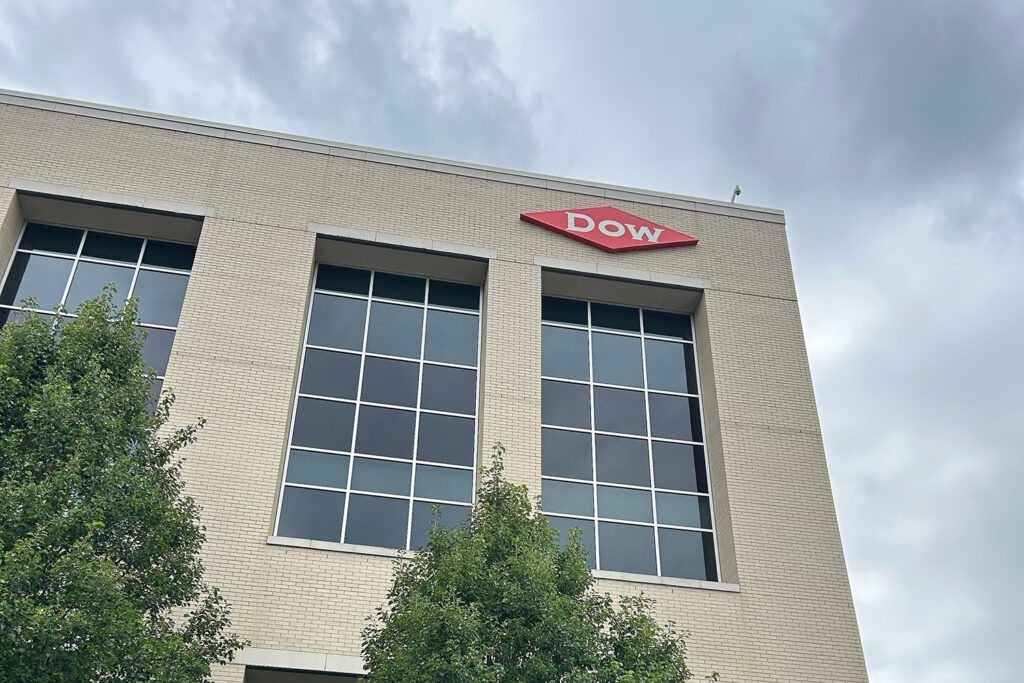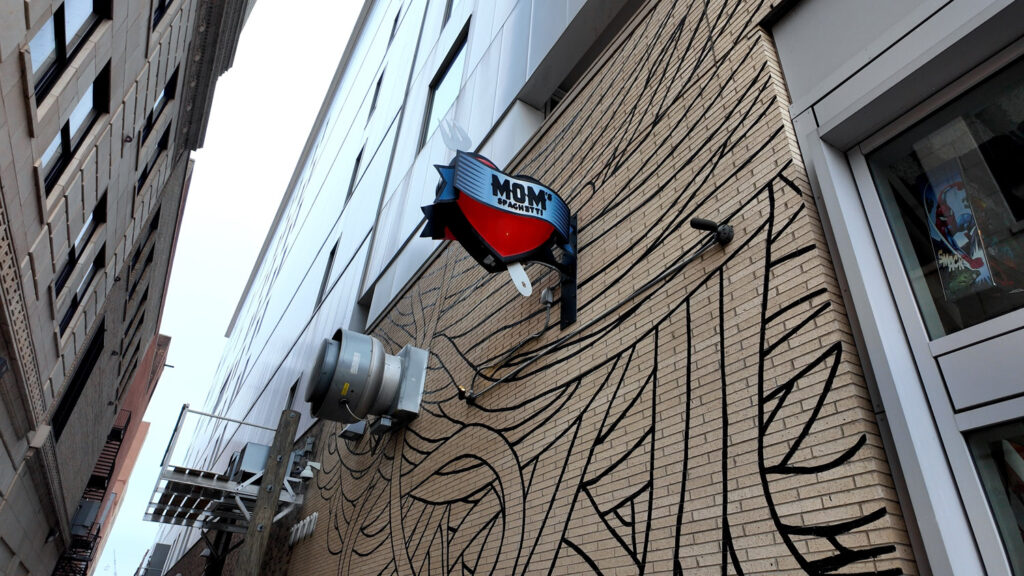Midland — You don’t have to explain what “working at Dow” means in the Tri-Cities. For more than a century, Dow Chemical has been the driving force behind Midland’s growth. The company employs about 10% of the county’s workforce directly, with many more connected through contract work and affiliated businesses.
Whether you’re in Bay City, Saginaw, or a smaller town downriver, you’ve felt its reach.
Today, Dow presents itself as a modern, sustainable, equity-driven company. The branding is polished. The graphics are bright. Press releases hit the right notes. Beneath the rebrand, however, lies a complex truth—one of contamination, loyalty, and genuine generosity.

Dow began in 1897 when founder Herbert H. Dow opened a brine-extraction plant in Midland. What had been a quiet logging town quickly became a center for chemical innovation.
Starting with bromine, Dow expanded into plastics, agriculture, pharmaceuticals, wartime production, electronics, and eventually today’s “green chemistry.”
The company became more than an employer. It became Midland’s unofficial city planner, major sponsor and the philanthropic engine for the whole region. Dow funded science labs at Delta College, granted money to Saginaw Valley State University, backed downtown revitalization efforts in Bay City, and supported nonprofits throughout the region.
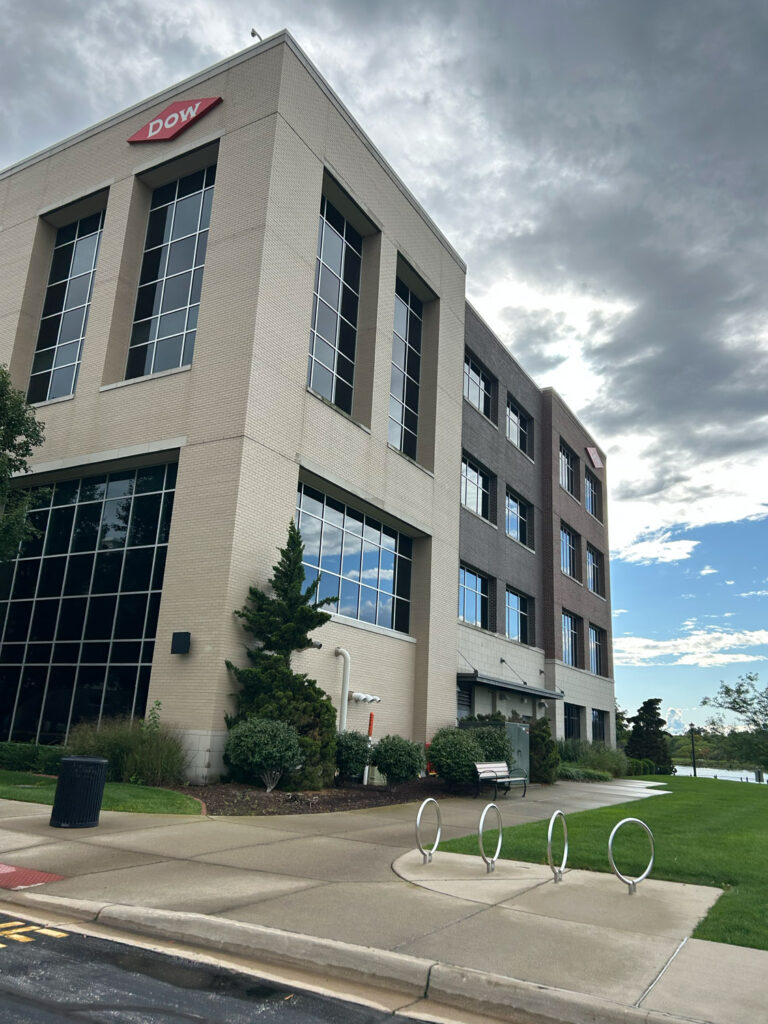
But there is another part of Dow’s legacy that cannot be ignored. For decades, the company discharged dioxins—highly toxic chemical byproducts—into the Tittabawassee River. That river winds through Midland, Saginaw, and into the bay.
By the late 20th century, the contamination had sparked federal investigations and led to an EPA-mandated cleanup. The dioxins spread into floodplains, backyards, and riverbeds. Property values dropped. Health concerns surfaced. Some areas remain fenced off and under monitoring to this day.
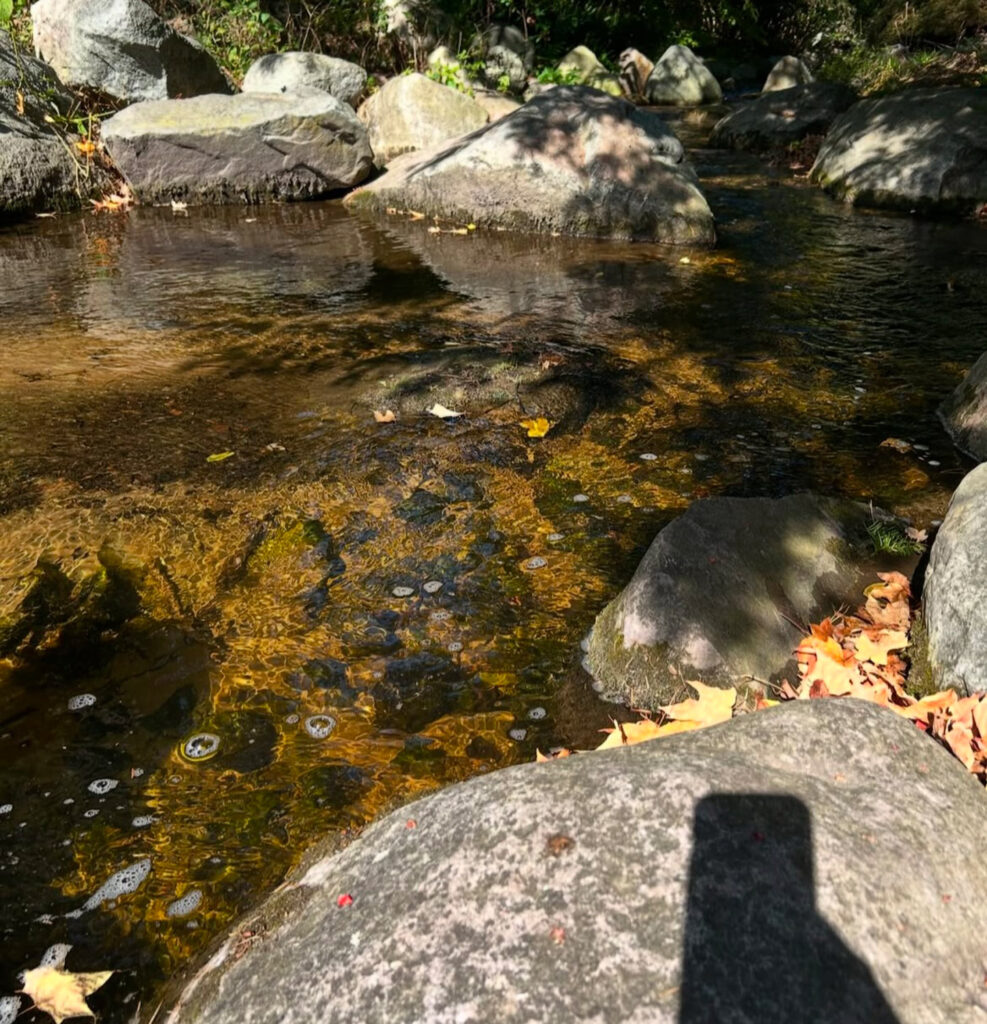
Dow acknowledged its responsibility. It has spent hundreds of millions on cleanup, entered long-term agreements with state and federal agencies, and continues working with the state to manage the aftermath. Even still, many locals still wonder why it was allowed to happen in the first place.
In recent years, Dow has shifted its public image. Following its 2015 merger with DuPont and the eventual split into three separate companies, Dow leaned heavily into new messaging centered on sustainability, innovation, and equity.
The company has pledged millions to racial equity efforts. It issued public statements during the George Floyd protests and invested in DEI programs across the region. In places like Saginaw, where economic and racial disparities are more visible, those investments have been especially prominent.
One thing is undeniable: Dow gives back. Its presence is everywhere—in Midland’s parks, at public festivals, and on the donor walls of museums and science centers. You cannot walk through town without seeing the company’s logo.
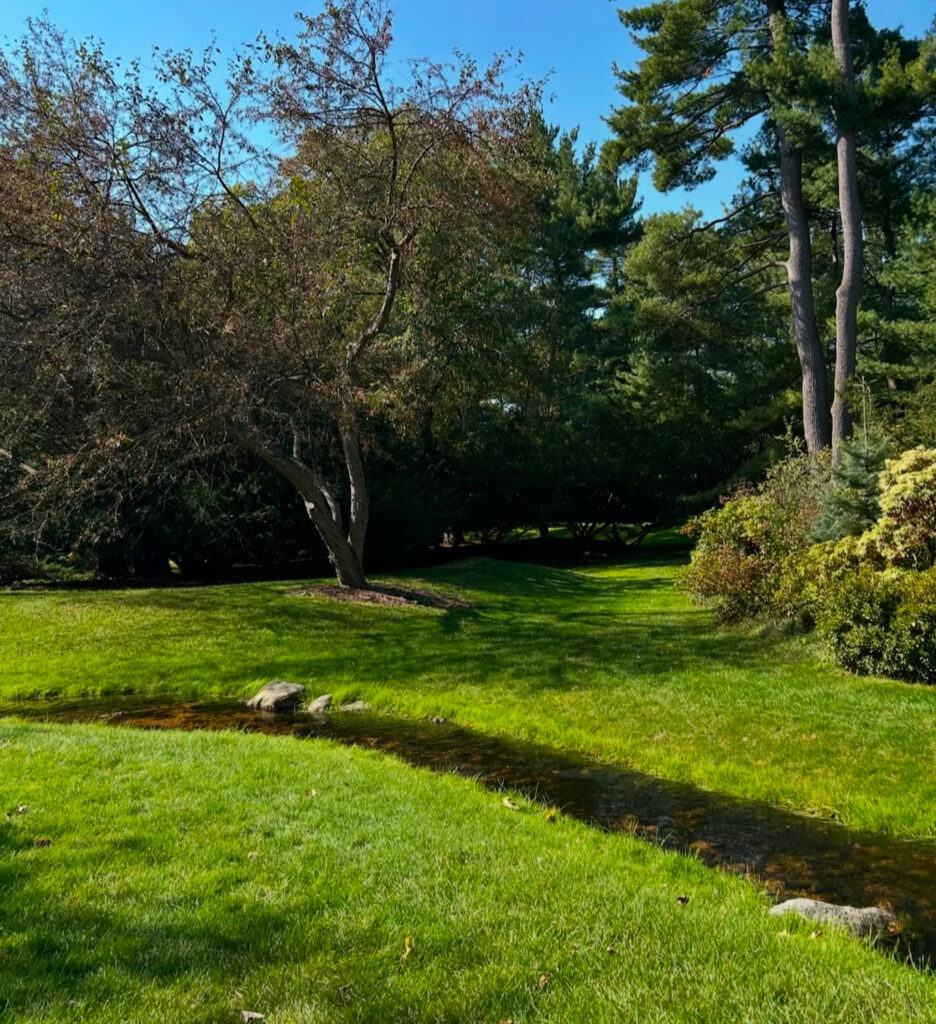
Dow Gardens, Midland’s 110-acre botanical attraction, remains a signature destination supported by both the Dow family and the company itself. The Grace A. Dow Memorial Library, named for the founder’s wife, continues to be a vital community hub. Dow High School is one of the best public schools in the area thanks to decades of corporate support.
In Saginaw, the Dow Event Center (formerly the Saginaw Civic Center) has hosted concerts, hockey games, and community events for generations. Dow also quietly funds STEM education, sustainability research, youth programs, and regional infrastructure.
So is Dow a net positive? Yes—with one caveat.

Dow created middle-class stability for generations in the Tri-Cities. It raised Midland’s standard of living. It attracted global attention to a part of Michigan often overlooked by national decision-makers. It has followed through on environmental commitments, even if those efforts came under pressure.
Still, Dow also shaped the region in its own image. It influenced how the economy works, how politics flow, and how land gets used. As the company moves forward with green branding and global ambitions, many residents continue to ask a question. Who benefits?
Dow has polluted and preserved. It wielded power and provided opportunity. It stayed when others left and gave when others could not.
At a time when most corporations have pulled out of aging industrial towns, Dow has stayed. It restructured, rebranded, and reinvested. For better or worse, it remains a pillar of the region.
Skepticism is fair, but the presence is still our privilege.
Dow still funds our future. And that is something worth recognizing.
Landen Taylor is a musician and explorer living in Bay City. Follow him on Instagram @landoisliving.
